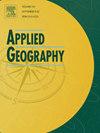从潜在知识流动到实现知识流动:中国工业4.0转型中的知识流动双通道框架
IF 5.4
2区 地球科学
Q1 GEOGRAPHY
引用次数: 0
摘要
向工业4.0的过渡正在重塑创新的空间动态,不仅要求技术能力,而且要求吸收和重组各种知识的能力。虽然先前的研究强调认知接近的作用,但很少有研究系统地区分潜在的和已实现的知识流动在形成区域专业化中的作用。本研究引入了一个双通道框架来研究城市如何通过结构上可用但未实现的机会(潜在流量)与实现的联系(实现流量)来发展技术优势。利用中国工业4.0领域的专利共分类数据,我们构建了pbdi、PBRI、RBDI和rbri四个指标来追踪城际知识扩散。实证结果表明,已实现的流动,特别是直接联系,在促进专业化方面发挥了一贯的积极作用,而没有整合机制的潜在流动则可能阻碍多元化。这些影响受当地吸收能力和发展水平的制约,相互作用分析表明,技术相关性放大了跨领域重组的好处。研究结果为研究本地和外部知识动态如何共同影响产业升级提供了新的视角,并为缩小中国区域创新差距提供了政策启示。本文章由计算机程序翻译,如有差异,请以英文原文为准。
From potential to realized knowledge flows: A dual-channel framework of knowledge flows in China's industry 4.0 transition
The transition to Industry 4.0 is reshaping the spatial dynamics of innovation by demanding not only technological capabilities but also the ability to absorb and recombine diverse knowledge. While prior studies emphasize the role of cognitive proximity, few have systematically distinguished between potential and realized knowledge flows in shaping regional specialization. This study introduces a dual-channel framework to examine how cities develop technological advantage through structurally available but unrealized opportunities (potential flows) versus actualized linkages (realized flows). Drawing on patent co-classification data from China's Industry 4.0 domains, we construct four indicators—PBDI, PBRI, RBDI, and RBRI—to trace intercity knowledge diffusion. Empirical results reveal that realized flows, especially direct linkages, play a consistently positive role in fostering specialization, while potential flows without integration mechanisms may hinder diversification. These effects are conditioned by local absorptive capacity and development level, with interaction analyses showing that technological relatedness amplifies the benefits of cross-domain recombination. The findings offer new insight into how local and external knowledge dynamics jointly shape industrial upgrading and provide policy implications for narrowing China's regional innovation gap.
求助全文
通过发布文献求助,成功后即可免费获取论文全文。
去求助
来源期刊

Applied Geography
GEOGRAPHY-
CiteScore
8.00
自引率
2.00%
发文量
134
期刊介绍:
Applied Geography is a journal devoted to the publication of research which utilizes geographic approaches (human, physical, nature-society and GIScience) to resolve human problems that have a spatial dimension. These problems may be related to the assessment, management and allocation of the world physical and/or human resources. The underlying rationale of the journal is that only through a clear understanding of the relevant societal, physical, and coupled natural-humans systems can we resolve such problems. Papers are invited on any theme involving the application of geographical theory and methodology in the resolution of human problems.
 求助内容:
求助内容: 应助结果提醒方式:
应助结果提醒方式:


